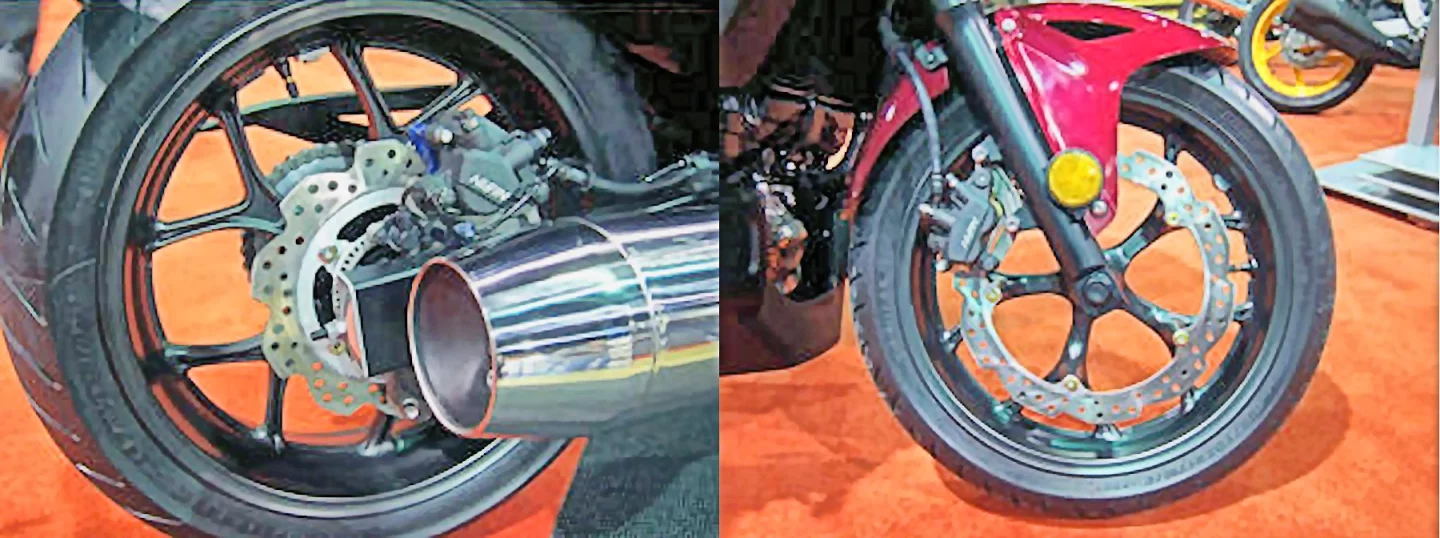Honda has introduced the first two motorcycles of its new CTX (Comfort, Technology and eXperience) series. The 2014 CTX700 and its siblings (CTX700N, CTX700D, and CTX700ND) are variations of the company's 2012 NC700 model which was designed mainly as reliable, inexpensive bikes for new riders.
First shown to the biking community at this year's International Motorcycle Show in Chicago, the CTX700 is designed to offer a comfortable ride for all comers, regardless of their experience and body size. The CTX700N is the "naked" version of the same bike while the D submodels are equipped with dual clutch automatic transmissions and anti-lock brakes to make them particularly accessible to new riders. Honda hopes that the combination of these features and the rather low entry cost (the CTX700N has a suggested retail price of US$6999, with the D submodels costing about $1000 more) will help entice a new group of riders into the world of motorcycling.

The CTX700 is outfitted with short tours and daily commuting in mind. The design seems a bit schizophrenic, combining as it does features of both cruisers and touring bikes. The engine is a 670cc parallel two-cylinder engine with throttle-body fuel injection and four valves per cylinder. The engine delivers only 48 hp (36 kW) of power at 6100 rpm, which seems a bit underpowered for a bike with a dry weight of about 500 lbs (227 kg).
The relatively low power (1.17 hp/cu in or 54 kW/l) of the CTX700 engine directly derives from its design parameters, heavier crank, and bolstered midrange at the expense of high power. For comparison, other motorcycle engines in this class run around 1.5 hp/cu in (70 kW/l). However, the CTX700 engine reaches its peak torque at 4680 rpm, which makes the bike feel a bit peppier than indicated by its performance numbers. The driving force is transferred to the wheels through a six-speed transmission and a chain drive.
The CTX700 models have slightly modified NC700 steel pipe frames. The wheelbase of the bike is 60.2 inches (1,530 mm), and it has a normal range rake of 27.7 degrees and a trail of 4.4 inches (112 mm). The front suspension is a 41 mm fork combined with a single shock giving 4.2 inches of travel, while the rear suspension is a Pro-Link single shock suspension with 4.3 inches of travel.
The main modification from the NC700 is a lower seat rail that provides a seat height of 28.3 inches (720 mm), making the bike easier to mount and maneuver. Seating is also more upright, with forward foot pegs positioned in front of the pulled-back handlebars. The engine is mounted at a forward slant to help lower the center of gravity of the bike, again providing a more benign feel of comfort and control. There is very little storage in the bike as equipped, but Honda has released saddlebags to up the carrying capacity. The fuel tank holds only a meager 3.17 gallons (11.7 l) of gasoline. Even at an expected 60 mpg, this considerably limits the touring range, limits that would be felt especially in the Western USA and in the open spaces of Australia.
The most user-friendly submodels of the CTX700 are the D submodels. They incorporate a DCT (dual clutch transmission) which allows lets you shift racing car-style with paddles on the handlebar, or automatically with a choice of shift points, as well as anti-lock brakes. These are only available as a package – ABS alone is not an option for the CTX700 or CTX700N. The two brake discs are cleverly made of a single sheet of material, but the use of a single disc in front seems unusual, and perhaps not particularly confidence-inspiring, for a 2014 model bike weighing 500 lbs.

Although test driving results are not yet available, the performance of the NC700, which shares the same engine, frame, and curb weight, provides an indication of what to expect. Its 0-60 time is a sluggish 5.4 seconds, while other bikes in this class yield times under four seconds. The quarter-mile time is 14.37 seconds with a speed of 90.77 mph. Comparable bikes negotiate the quarter-mile about two seconds faster while hitting speeds over 100 mph. One significant result of using the Honda engine is that the mileage tested at nearly 60 mpg (26 km/l), a property likely to be echoed in the largely identical CTX700 bikes.
Perhaps predictably, many in the motorcycle community are less than excited at what some term bland, unexciting bikes. Still, there seems near universal agreement that the CTX700s have a place in the market and it will be certainly be interesting to see if Honda heads into sportier territory with additional models in the CTX range.
Source: Honda Worldwide















